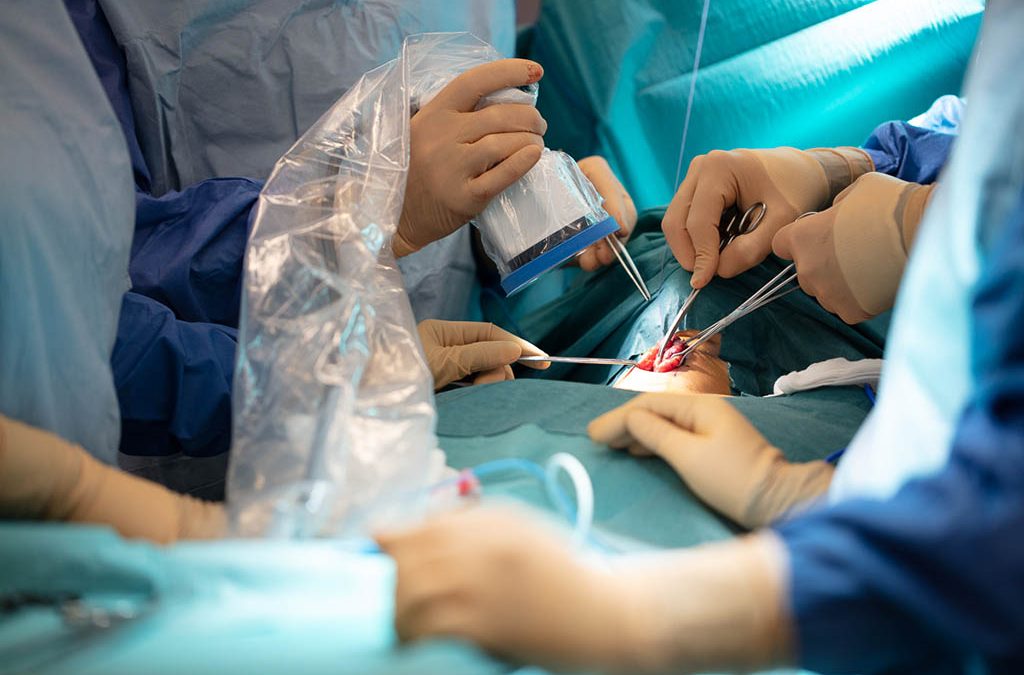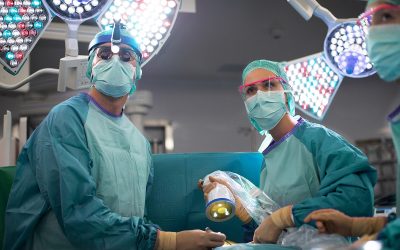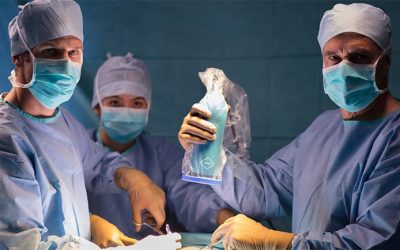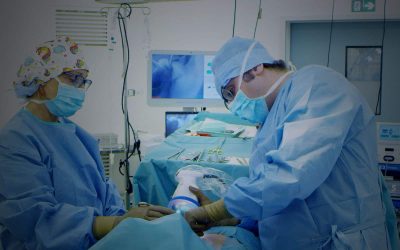Parathyroid gland reimplantation (also called autotransplantation) consists in transplanting fragments of a parathyroid gland (or part of it) into a muscle of the neck or of the forearm. The procedure aims to ensure the production of a sufficient amount of parathyroid hormone, a hormone that is essential for the regulation of calcium levels. In this article, we look at the reimplantation of parathyroid glands, the surgical procedure and the evidence on its safety and effectiveness.
What is a parathyroid gland?
The parathyroid glands are located in the neck, behind and near the thyroid gland. These four very small glands, of 2 to 3 mm in diameter and which weigh 30 to 40 mg, secrete a hormone called parathyroid hormone (PTH). This hormone, also known as parathormone, is involved in regulating calcium levels in the blood. Too little parathyroid hormone production can lead to hypoparathyroidism, a medical condition caused by a lack of parathormone. This disorder can lead to hypocalcemia, or abnormally low blood calcium levels. Hypocalcemia can cause tremors, stiffness and muscle pain, as well as confusion and memory problems in some cases.
When is parathyroid gland reimplantation performed?
Parathyroid gland reimplantation or autotransplantation can be performed to reduce the risk of hypoparathyroidism if the parathyroid glands are accidentally removed during a thyroidectomy (thyroid gland removal), for example in the case of thyroid cancer.
Parathyroid gland reimplantation can be done immediately during surgery or after cryopreservation of the glands (cooling at very low temperature). Fragments of the parathyroid glands are injected with a syringe into the sternocleidomastoid muscle of the neck or in the forearm, under the skin.
Parathyroid gland reimplantation or autotransplantation is a controversial procedure. Some studies have demonstrated its benefits, while others point to the risks.
For example, an Italian study concluded that parathyroid gland reimplantation in forearm subcutaneous tissue during thyroid surgery is a safe, easy and effective procedure. However, another study conducted by Chinese researchers shows that autotransplantation of a parathyroid gland does not affect the incidence of permanent hypoparathyroidism, but increases the risk of transient hypoparathyroidism when the rest of parathyroid glands are preserved in situ.
If a clinical symptom and/or hypocalcemia is found after surgery, oral treatment including calcium and vitamin D derivatives may be prescribed.
Dr. Fares Benmiloud, an Endocrine Surgeon at the European Hospital of Marseille in France, says about FLUOBEAM® LX: :
“NIR imaging used during total thyroidectomies significantly reduces postoperative hypocalcemia, improves the identification of parathyroid glands and reduces their autotransplantation rate“.




